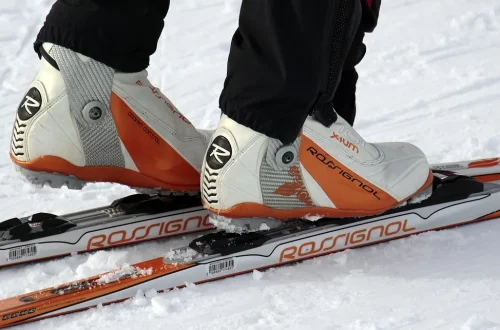
Essential Guide to Choosing the Right Ski Roof Carrier for Your Vehicle
When winter arrives, many outdoor enthusiasts eagerly prepare for their trips to the slopes. However, the excitement of skiing or snowboarding can quickly diminish if you don’t have the right equipment to transport your gear safely and efficiently. The journey to your favorite ski destination should be as enjoyable as the activities waiting for you there, and a reliable ski roof carrier can make all the difference. These carriers not only provide the necessary storage space but also ensure that your equipment is protected from the elements while you travel.
Choosing the right ski roof carrier involves understanding your vehicle’s specifications, the type and amount of gear you plan to transport, and the various features available in the market today. With a multitude of options, it can be overwhelming to select the ideal carrier that meets your needs. This guide will help you navigate the essential factors to consider, ensuring you make an informed decision for a hassle-free adventure on the slopes.
Understanding Your Vehicle’s Compatibility
Before investing in a ski roof carrier, it’s crucial to assess your vehicle’s compatibility. Not all carriers fit every type or model of vehicle, and selecting one that doesn’t align with your car’s specifications can lead to safety issues and potential damage.
Start by examining your vehicle’s roof type. Most modern cars come with either factory-installed crossbars, a bare roof, or raised side rails. If your vehicle doesn’t have crossbars, you may need to purchase a roof rack system first. Roof racks provide the foundational support for your ski carrier and come in different styles, so choose one that matches your vehicle’s design and load capacity.
Next, consider the weight limit of your roof rack. Each carrier comes with a specific weight capacity, and exceeding this limit can compromise both the safety of your vehicle and the integrity of the carrier itself. Check your vehicle’s manual for recommendations on load limits. Additionally, understanding the dimensions of your roof space will help ensure that the carrier you choose won’t obstruct your view while driving or interfere with other accessories you might have mounted on the roof.
Lastly, consider the overall height of your vehicle once the ski carrier is installed. If you frequently park in garages or other low-clearance areas, choosing a low-profile carrier can prevent potential accidents and damage.
Types of Ski Roof Carriers
Ski roof carriers come in various types, each with its own unique features and benefits. Understanding these types will help you select the one that best suits your lifestyle and gear.
1. **Slide-in carriers**: These carriers allow you to slide your skis or snowboards into the carrier, which is ideal for quick loading and unloading. They often come with a locking mechanism for security and can hold multiple pairs of skis or boards.
2. **Upright carriers**: Upright carriers hold your skis vertically, which can save space and reduce wind resistance while driving. They are great for those who want to maintain a sleek profile on the road. However, they may require more effort to load and unload, especially if you’re dealing with heavy equipment.
3. **Universal carriers**: Many brands offer universal ski roof carriers that are designed to fit a wide range of vehicle models. These are versatile and usually adjustable, making them a great option if you have multiple vehicles or if you plan to change cars in the future.
4. **Locking carriers**: Security is a key concern for any outdoor enthusiast. Look for carriers that come equipped with a locking feature, ensuring that your gear remains safe while you’re away from the vehicle. Some models even have locks that secure the carrier itself to the roof rack.
5. **Custom-fit carriers**: If you own a specific vehicle model, you might consider custom-fit ski roof carriers. These are tailored to your vehicle’s specifications, offering a seamless look and optimal performance. They often come with enhanced features, such as integrated locks and easy-to-use mounting systems.
Each type has its advantages, so evaluate your ski and snowboard habits to determine which carrier aligns best with your needs.
Installation and Maintenance Tips
Once you’ve chosen the right ski roof carrier, proper installation and maintenance are essential to ensure its longevity and effectiveness.
First, carefully read the manufacturer’s installation instructions. Some carriers come pre-assembled, while others require assembly before mounting. Ensure that all components are included and that you have the necessary tools for installation. If you’re uncertain about the installation process, consider seeking professional assistance. A poorly installed carrier can lead to accidents or damage to your vehicle.
Regular maintenance is also vital. After each ski trip, inspect your carrier for any signs of wear or damage. Pay attention to the locking mechanisms and mounting hardware, as these are critical for secure and safe transportation. Clean the carrier regularly to remove dirt, salt, and debris that can accumulate over time, especially if you’ve traveled in snowy or icy conditions.
Additionally, if you live in an area with extreme weather conditions, consider removing the carrier during off-seasons. This can prolong the life of the carrier and improve your vehicle’s fuel efficiency, as it reduces wind resistance.
Finally, consider keeping a small toolkit in your vehicle, including the necessary tools for quick adjustments or repairs while on the road. Being prepared can save you time and hassle, allowing you to focus on enjoying your skiing adventures.
Safety Considerations When Transporting Gear
Transporting your ski and snowboard equipment safely is paramount, not just for your gear but also for your safety on the road. Here are some key safety considerations to keep in mind when using a ski roof carrier.
First, ensure that your gear is secured tightly within the carrier. Whether it’s skis, snowboards, or poles, everything should be fastened properly to prevent shifting during travel. A loose load can lead to distractions while driving and increase the risk of accidents.
Always double-check that the carrier is securely attached to your roof rack before hitting the road. A quick inspection can help you identify any loose fittings or potential issues that may arise during travel. Additionally, take into account the visibility of your rearview mirrors. Make sure that your carrier does not obstruct your view, as this can be a serious safety hazard.
When driving with a ski roof carrier, adjust your driving habits accordingly. Remember that your vehicle’s handling may change due to the added height and weight. Take turns slowly and maintain a safe distance from other vehicles. Be especially cautious in adverse weather conditions, as wind can impact your vehicle’s stability with a ski carrier attached.
Lastly, consider using a ski rack cover or protective bag for added protection against the elements. This can help minimize wear and tear on your gear during transit and keep it clean and ready for use when you arrive at your destination.
In conclusion, selecting the right ski roof carrier requires careful consideration of your vehicle’s compatibility, the types of carriers available, and the importance of proper installation and maintenance. By following these guidelines, you can ensure that your ski gear is transported safely and efficiently, allowing you to focus on enjoying your time on the slopes. Happy skiing!




